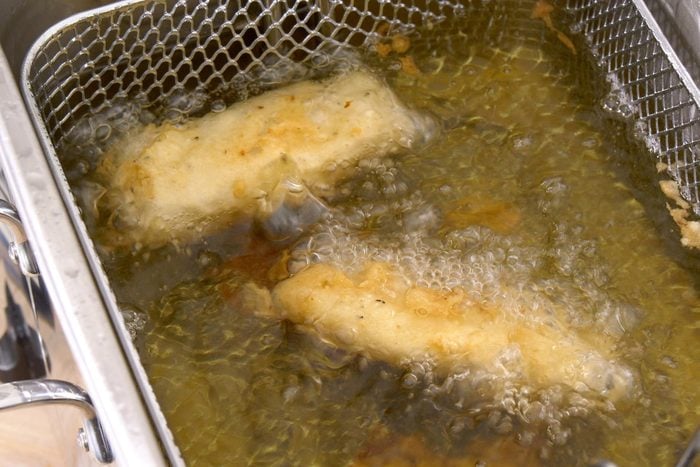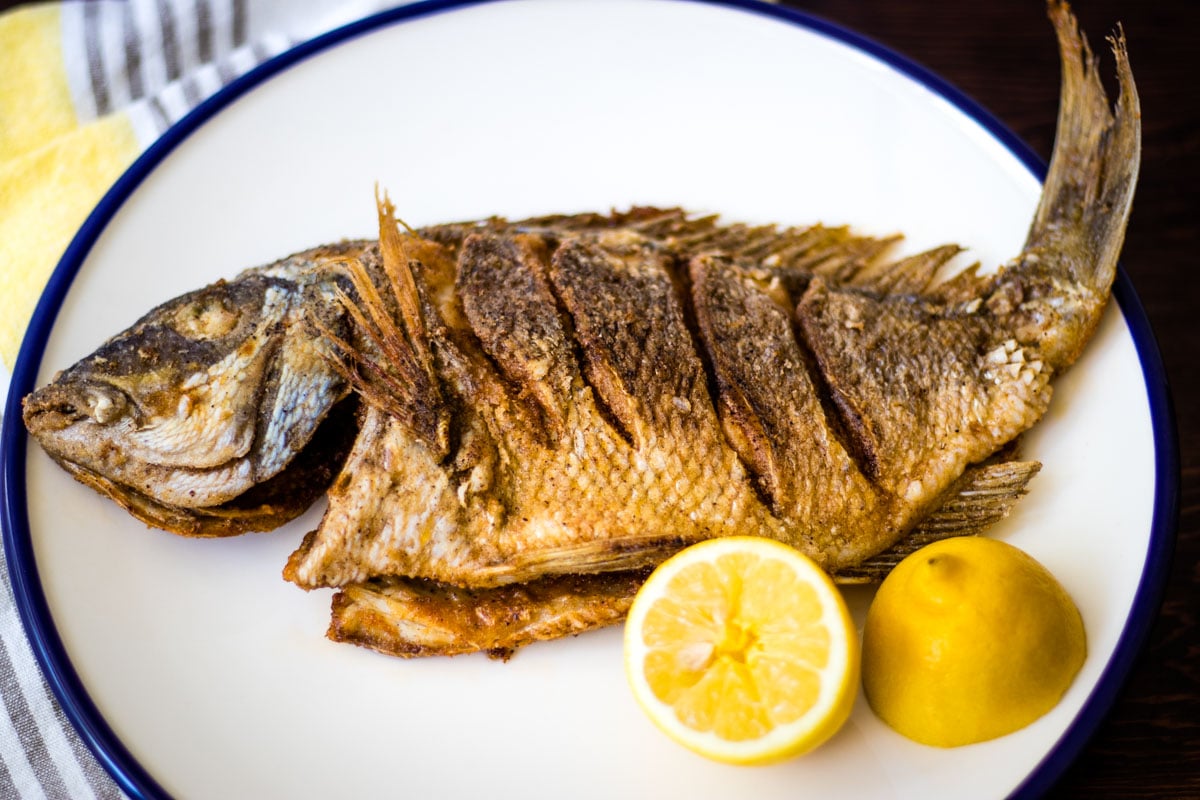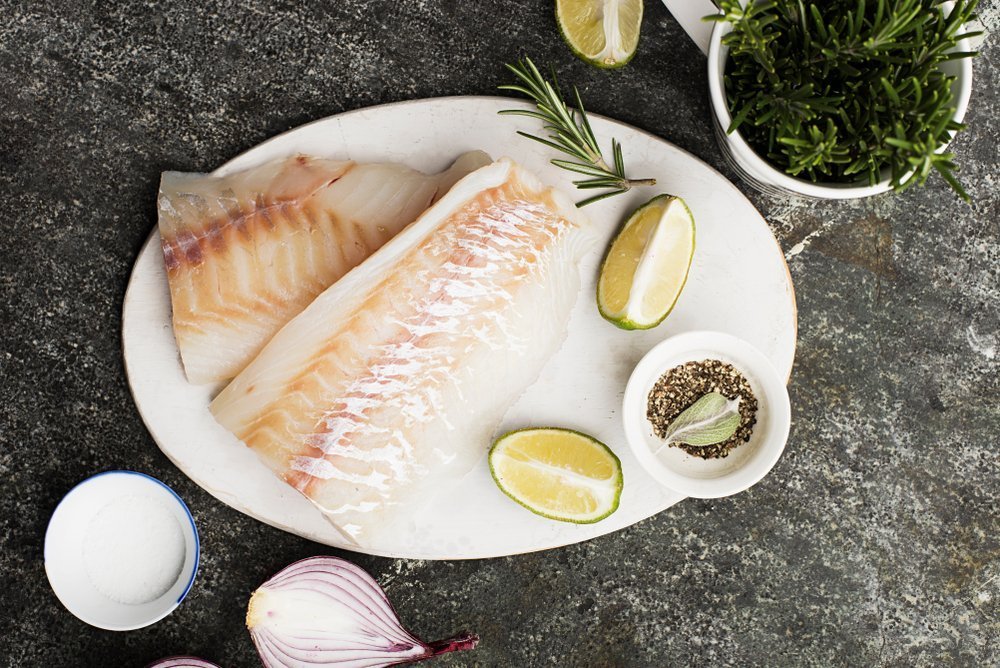Deep frying fish can be tricky. The perfect golden crust and moist interior depend on timing.
So, how long should you deep fry fish? Deep frying fish usually takes about 3 to 5 minutes per side. The exact time depends on the fish’s thickness and the oil’s temperature. Achieving that perfect crispy texture without overcooking requires attention.
Knowing the right time to fry can make your dish delicious and avoid any burnt pieces. In this blog, we’ll explore the details of deep frying fish, including tips and tricks. You’ll learn how to get that restaurant-quality fish at home. Stay tuned to master the art of deep frying fish. Let’s dive into the crispy world of deep-fried fish!
:max_bytes(200000):strip_icc()/extra-crispy-fried-fish-FT-RECIPE0721-b6fc598c217c4dd1ad402e6d86d849ea.jpg)
Credit: www.foodandwine.com
Choosing The Right Fish
Choosing the right fish is crucial for a successful deep-fry session. Different fish types yield different textures and flavors. Ensuring freshness is equally important. Fresh fish guarantees a delicious and safe meal. Below are some tips to help you make the best choice.
Best Fish Types
Not all fish are ideal for deep frying. Some fish types work better than others.
- Cod: Cod is mild and flaky, perfect for deep frying.
- Tilapia: Tilapia has a firm texture that holds up well in hot oil.
- Haddock: Haddock is similar to cod, offering a slightly sweeter taste.
- Catfish: Catfish has a unique flavor that crisps up nicely.
- Halibut: Halibut is a bit pricey but offers a rich, meaty texture.
Freshness Check
Always check the freshness of the fish before frying. Fresh fish ensures the best taste and texture.
- Smell: Fresh fish should smell like the ocean. It should not smell fishy.
- Eyes: The eyes should be clear and bulging, not cloudy or sunken.
- Gills: Look for bright red or pink gills. Avoid brown or grey gills.
- Flesh: The flesh should be firm and bounce back when pressed. It should not feel mushy.
- Skin: The skin should be shiny and moist, not dry or dull.
| Fish Type | Texture | Flavor |
|---|---|---|
| Cod | Flaky | Mild |
| Tilapia | Firm | Mild |
| Haddock | Flaky | Slightly Sweet |
| Catfish | Firm | Unique |
| Halibut | Meaty | Rich |

Credit: www.tasteofhome.com
Preparing The Fish
Before diving into deep frying fish, proper preparation is essential. Preparing the fish involves a few crucial steps that ensure the best taste and texture. This section will guide you through the process of cleaning and slicing the fish, as well as seasoning it for optimal flavor.
Cleaning And Slicing
Start by cleaning the fish thoroughly. Rinse it under cold water to remove any slime or debris. Pat it dry with paper towels.
Next, use a sharp knife to slice the fish into even pieces. This ensures uniform cooking. If you’re using whole fish, remove the head, fins, and tail.
Place the cleaned and sliced fish on a clean surface, ready for the next step.
Seasoning Tips
Seasoning is key to enhancing the flavor of your fish. Start with a simple mix of salt and pepper. Sprinkle it evenly over the fish pieces.
For added flavor, consider using spices like paprika, garlic powder, or cayenne pepper. These add a kick to your fish. You can also use fresh herbs like dill or parsley.
If you prefer a more complex taste, marinate the fish. Use a blend of lemon juice, olive oil, and your favorite herbs. Let the fish sit in the marinade for at least 30 minutes.
Remember, the goal is to enhance, not overpower, the natural taste of the fish.
Selecting The Oil
Choosing the right oil is crucial for deep frying fish. The oil you select affects the taste and texture of the fish. It also impacts the overall cooking process. Let’s delve into the different oil varieties and their importance.
Oil Varieties
There are several types of oils suitable for deep frying fish. Each has its unique properties:
- Vegetable Oil: A common choice. It has a neutral flavor and high smoke point.
- Canola Oil: Also popular. It is light, neutral, and has a high smoke point.
- Peanut Oil: Known for its nutty flavor. It has a very high smoke point.
- Corn Oil: Another good option. It’s affordable and has a high smoke point.
These oils are great for deep frying due to their high smoke points. They also do not overpower the fish’s natural flavors.
Smoke Point Importance
The smoke point of an oil is the temperature at which it starts to smoke. This is crucial for deep frying.
Here’s a quick guide:
| Oil Type | Smoke Point (°F) |
|---|---|
| Vegetable Oil | 400-450 |
| Canola Oil | 400-450 |
| Peanut Oil | 450-475 |
| Corn Oil | 450 |
High smoke points are essential. They ensure the oil remains stable at high temperatures. This results in a crisp, golden exterior without burning the fish. Always choose an oil with a smoke point above 400°F for deep frying.

Credit: wecountcarbs.com
Setting The Temperature
Deep frying fish can be a delightful cooking method. But, understanding the right temperature is crucial. Setting the temperature correctly ensures your fish is crispy outside and tender inside. This section will guide you on achieving the perfect deep frying temperature.
Optimal Temperature
The optimal temperature for deep frying fish is between 350°F and 375°F. This range allows the fish to cook evenly and prevents it from absorbing too much oil. If the temperature is too low, the fish becomes greasy and soggy. If too high, the exterior burns before the inside cooks through.
Thermometer Use
A cooking thermometer is essential when deep frying. It helps you maintain the oil at the right temperature. You can use a digital or an analog thermometer. Insert the thermometer into the oil, but avoid touching the bottom of the pot. This ensures an accurate reading.
Here’s a simple table to guide you:
| Temperature | Outcome |
|---|---|
| Below 350°F | Greasy and Soggy Fish |
| 350°F – 375°F | Perfectly Fried Fish |
| Above 375°F | Burnt Exterior |
Follow these steps for using a thermometer:
- Heat the oil in a deep fryer or a heavy pot.
- Attach the thermometer to the side of the pot.
- Wait until the oil reaches the desired temperature.
- Adjust the heat to maintain the temperature.
Keeping the oil at the right temperature ensures your fish is always perfectly fried.
Coating The Fish
Coating the fish before deep frying is essential for achieving a crispy texture. The coating helps seal in moisture and adds delicious flavor. There are several methods to coat fish, each providing a unique taste and texture.
Batter Options
Choosing the right batter can make a big difference. Here are a few popular options:
- Beer Batter: Beer adds a light, airy texture. Mix flour, salt, and beer until smooth.
- Tempura Batter: This Japanese style uses cold water and flour. It’s light and crispy.
- Buttermilk Batter: Buttermilk gives a tangy flavor. Mix with flour for a thick coating.
Breadcrumb Techniques
Breadcrumbs offer another way to coat fish. They provide a different texture and crunch.
- Panko Breadcrumbs: These Japanese breadcrumbs are light and crispy. They absorb less oil.
- Seasoned Breadcrumbs: Add flavor with herbs and spices. Mix with flour for extra crunch.
- Cornmeal: Cornmeal is a Southern favorite. It gives a gritty, crunchy texture.
For best results, dip the fish in flour first. Then, dip in beaten eggs. Finally, coat with your chosen batter or breadcrumbs. This ensures the coating sticks well and fries evenly.
Deep Frying Process
The deep frying process is crucial for perfecting your fish dish. It involves several steps to ensure the fish is crispy outside and tender inside. Let’s dive into the details of this cooking method.
Preheating The Oil
Start by pouring the oil into a deep fryer or a heavy-bottomed pot. Use oil with a high smoke point like vegetable or peanut oil. Heat the oil to 350°F to 375°F. Use a kitchen thermometer to check the temperature.
Maintaining the right temperature is key. If the oil is too hot, the fish will burn outside and stay raw inside. If it’s too cool, the fish will absorb more oil and become greasy.
Placing Fish In Oil
Once the oil is hot, gently place the fish into the oil. Avoid overcrowding the pot; it lowers the oil’s temperature. Fry the fish in batches if necessary.
Fry the fish for about 3 to 5 minutes per side. The cooking time varies based on the fish thickness. Turn the fish halfway through the cooking process to ensure even frying.
Use a slotted spoon or tongs to remove the fish. Place the fried fish on a paper towel-lined plate to drain excess oil.
Here’s a quick reference table for deep frying fish:
| Step | Description |
|---|---|
| Preheat Oil | Heat to 350°F to 375°F |
| Place Fish | Fry 3-5 minutes per side |
| Drain Fish | Use paper towel-lined plate |
Timing For Perfect Fry
Deep frying fish can be tricky. The key is timing. Perfect timing ensures a crispy exterior and moist interior. Let’s dive into the details.
Cooking Duration
The cooking duration depends on the thickness of the fish. Here is a simple table to guide you:
| Fish Thickness | Frying Time |
|---|---|
| 1/2 inch | 3-4 minutes |
| 1 inch | 5-6 minutes |
| 1.5 inches | 7-8 minutes |
Using a deep-fry thermometer helps. Keep the oil temperature between 350°F and 375°F. This ensures the fish cooks evenly.
Signs Of Doneness
Watch for these signs to know if your fish is done:
- The fish turns golden brown.
- The flesh flakes easily with a fork.
- The internal temperature reaches 145°F.
Overcooked fish becomes dry and chewy. Undercooked fish can be unsafe. So, timing and observation are key.
Remember, different types of fish may require slightly different times. Always adjust based on thickness and type.
Post-frying Steps
After deep frying fish, it’s essential to follow proper post-frying steps. These steps ensure your dish is delicious and well-presented. Let’s break it down into two main parts: Draining Excess Oil and Serving Suggestions.
Draining Excess Oil
Once you remove the fish from the fryer, place it on a wire rack. This allows the excess oil to drip off. Underneath the rack, put a paper towel or a clean kitchen towel. This step prevents the fish from becoming greasy. Leave the fish to drain for about 2-3 minutes. You can also gently pat the fish with another paper towel to absorb more oil.
Serving Suggestions
Presenting your fried fish well can enhance the dining experience. Here are some simple serving ideas:
- Serve the fish with lemon wedges. The citrus adds a fresh flavor.
- Pair with tartar sauce or a spicy dip for extra taste.
- Add a side of coleslaw or potato salad for a balanced meal.
- For a healthier option, serve with a fresh green salad.
Use these suggestions to make your meal more enjoyable.
Deep frying fish can be quick and simple with the right steps. Ensure oil is hot enough before adding fish. Cook for 3-4 minutes on each side. Fish is ready when golden and crispy. Use a meat thermometer for accuracy.
Aim for an internal temperature of 145°F. Practice makes perfect. Enjoy your delicious, crispy fish with family and friends. Happy frying!
FAQs:
How Long To Deep Fry Fish Fillets?
Deep fry fish fillets for 3-4 minutes at 350°F. Ensure they are golden brown and crispy. Thicker fillets may need extra time.
What Temperature To Deep Fry Fish?
Set your oil temperature to 350°F for deep frying fish. This ensures crispy, golden-brown results without burning.
How To Know When Fish Is Done Frying?
Fish is done frying when it reaches an internal temperature of 145°F. It should be golden brown and flake easily with a fork.
Can You Reuse Oil After Frying Fish?
Yes, you can reuse oil after frying fish. Strain it through a fine-mesh sieve to remove food particles. Store in a sealed container.


